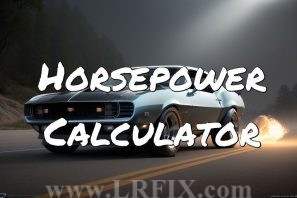Compression Ratio Calculator
The LRFIX Compression Ratio Calculator calculates the ratio of an engine's cylinder volume at bottom dead center to top dead center.
Compression Ratio Calculator
What is Compression Ratio?
An automotive compression ratio is the ratio of the maximum cylinder volume when the piston is at the bottom of its stroke (BDC) to the minimum cylinder volume when the piston is at the top (TDC).
Tip: For a complete understanding of your engine’s performance, use an Engine Displacement Calculator to determine the engine's total volume first.
How to Use a Compression Ratio Calculator
Follow these steps to accurately determine your engine’s compression ratio:
- Input the bore diameter in inches: This measures the diameter of the cylinder bore.
- Input the stroke length in inches: This represents the distance the piston travels within the cylinder.
- Input the deck height in inches: This is the distance from the top of the piston at top dead center (TDC) to the surface of the cylinder head.
- Input the cylinder head volume in cubic inches: This indicates the volume of the cylinder head chamber when the piston is at TDC.
- Use the calculator: Finally, determine the compression ratio with the values you provided.





